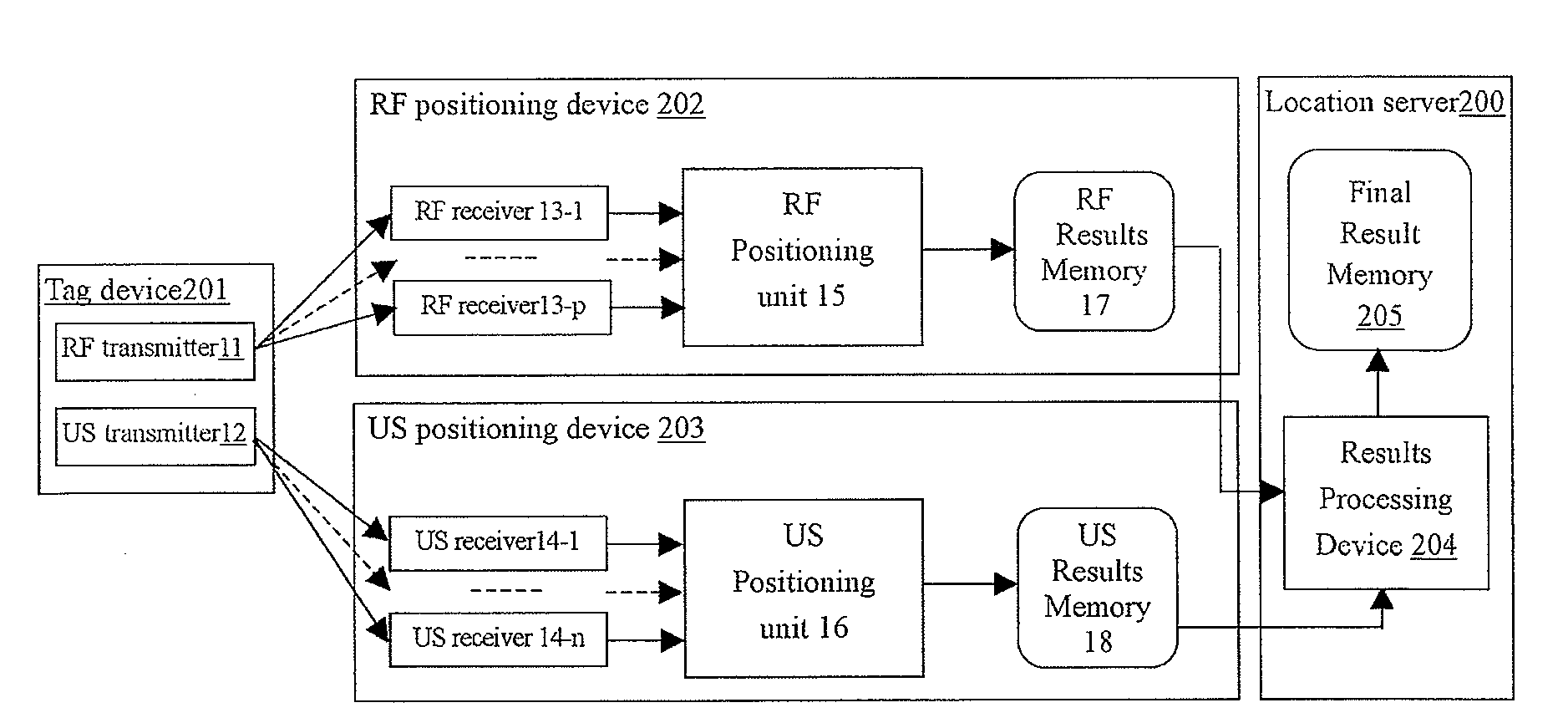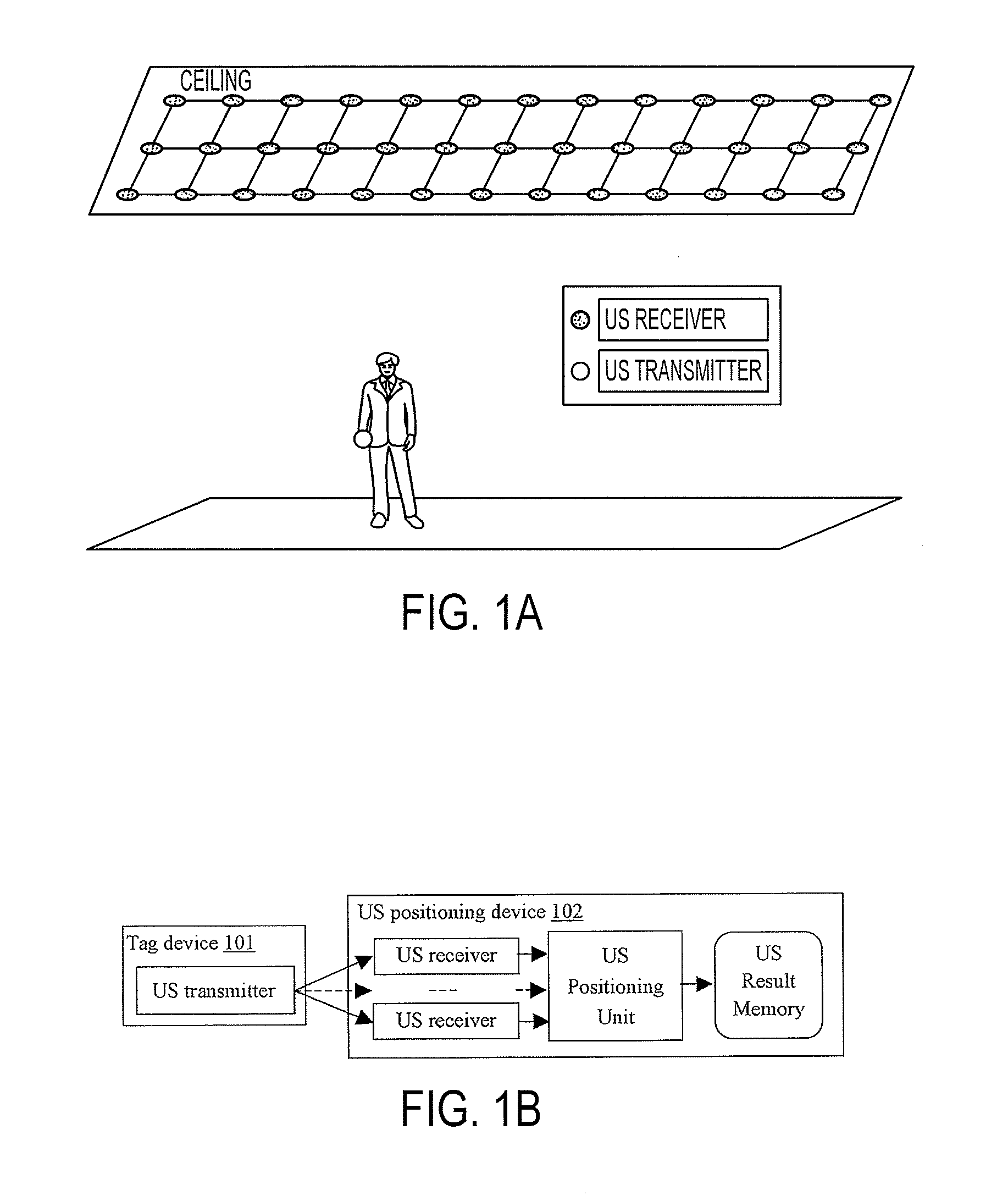Method and system for positioning object with adaptive resolution
a positioning object and adaptive resolution technology, applied in the direction of direction finders, instruments, measurement devices, etc., can solve the problems of low accuracy, low system cost, and low accuracy of rf-based approach, so as to reduce the deployment cost of the system and reduce the cost of the system
- Summary
- Abstract
- Description
- Claims
- Application Information
AI Technical Summary
Benefits of technology
Problems solved by technology
Method used
Image
Examples
Embodiment Construction
[0041]FIG. 2A shows a hybrid positioning system according to the present invention, which can provide adaptive positioning resolution for location based services. The space to be detected is divided into two kinds of areas: “Hot Area” and “General Area”. In the “Hot Area”, highly accurate positioning (for example, in centimeter level) is required, while in the “General Area”, low positioning accuracy (in meters or room level) is acceptable. Ultrasonic (US) receivers are deployed over the “Hot Area” for highly accurate localization and RF receivers are deployed over the whole detected space (either of the “Hot Area” and the “General Area”) for larger resolution localization.
[0042]When designing hybrid positioning system of the present invention, the following two aspects are considered:
[0043]1. From the application aspect, in location-based access control, it is usually the case that people may require different positioning granularities at different areas. For example, at the intere...
PUM
 Login to View More
Login to View More Abstract
Description
Claims
Application Information
 Login to View More
Login to View More - R&D
- Intellectual Property
- Life Sciences
- Materials
- Tech Scout
- Unparalleled Data Quality
- Higher Quality Content
- 60% Fewer Hallucinations
Browse by: Latest US Patents, China's latest patents, Technical Efficacy Thesaurus, Application Domain, Technology Topic, Popular Technical Reports.
© 2025 PatSnap. All rights reserved.Legal|Privacy policy|Modern Slavery Act Transparency Statement|Sitemap|About US| Contact US: help@patsnap.com



